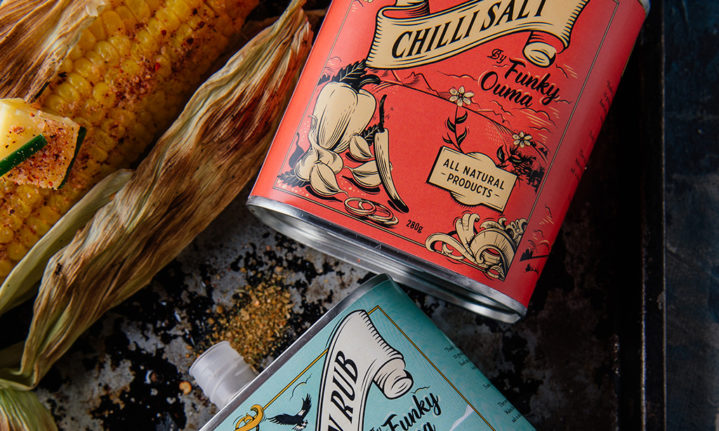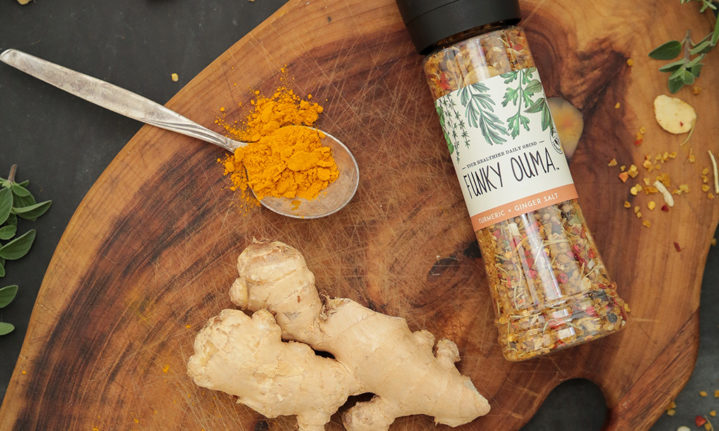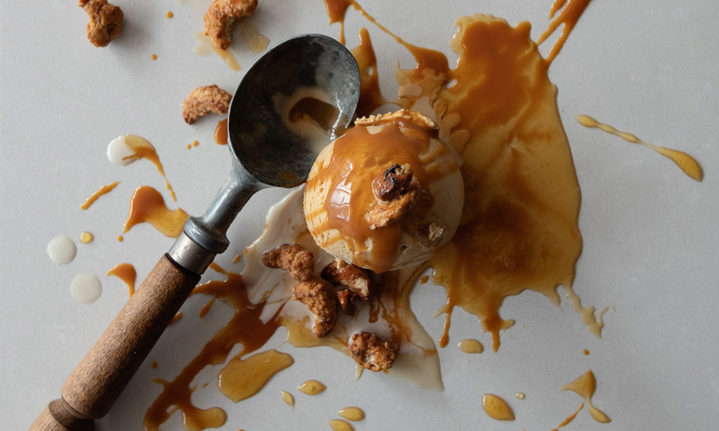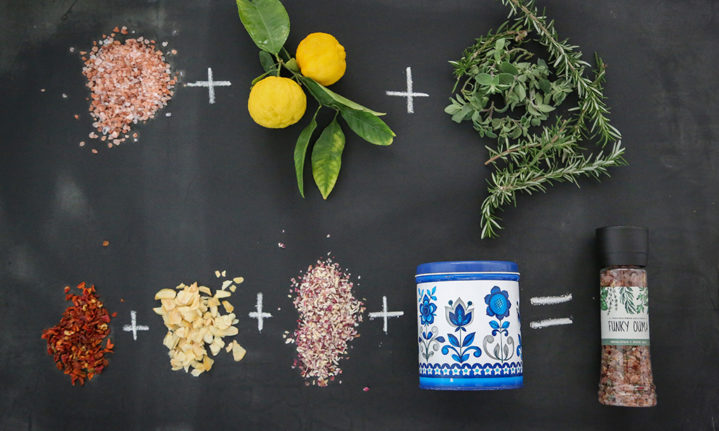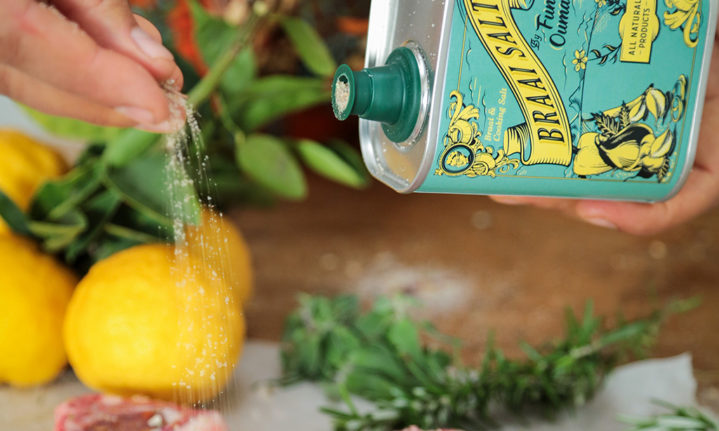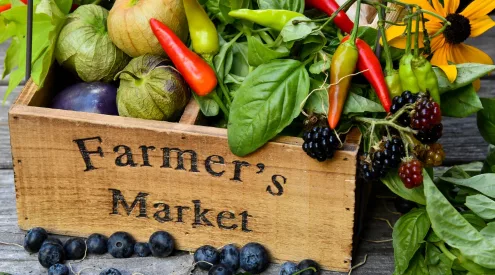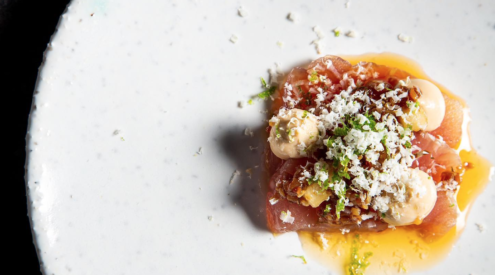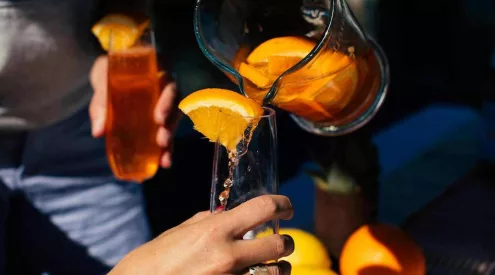The addition of salt to food was the earliest indicator that humans were improving and developing specific cuisines, writes Louzel Lombard Steyn. We’re the only creatures to tweak our nutrition to taste better. Salt has made us more seasoned beings.

A giant salt crystal from Kalahari harvest site.
Words: Louzel Lombard Steyn | Photography: Laire Gunn, Damian Simons, Louzel Lombard Steyn
Every winter holiday of my childhood was spent in our farm butchery. The school break would fall right in the middle of hunting season, which meant making biltong and sausages and harnessing the bounty of the season as best we could so as to enjoy good meat for the next year to come. Salt, naturally, played a vital role. A large 50kg sack of coarse salt stood in the corner of the cold room for the preservation of buckskins. It wasn’t the cleanest of salts on the market. Frankly, it stank. But it did the job when we needed to cure and tan the karosses.
One year, my best friend from boarding school came to visit for the holiday. We were quite the entrepreneurs, Anna-Marie and I. During the term, we had a business selling our tuck (daily rations of sweets and snacks you could bring from home) at inflated prices to hungry boarders in hostel. We also polished our peers’ shoes for pocket money and charged 50c a head to French plait the other girls’ hair.
The farm visit brought about new business opportunities. My mother pretended not to notice us carrying bucket loads of the smelly vellesout from the butchery to my bedroom. Then the garden was raided for aromatics like rosemary, lavender and thyme. Next, mum’s box with baking essentials for food colouring and essence of almond, caramel and peppermint. Soon, a full-scale bath salt business was in production.
The problem with such a booming business on a farm 60km outside of town is that patrons are scarce. The two other farmers that live in a 12km radius ended up buying the lot; 5kg worth of robustly flavoured and vibrantly coloured vellesout each. Salt of the earth.

Unframed
The business didn’t last long. But the value of humble salt sparked in me the earliest flickers of an entrepreneurial spirit – with uncanny significance. Even today, our collective comprehension of wages for work links back to salt. Roman legionnaires were paid in salt or salarium argentum, the Latin origin of the word ‘salary’. In Tibet, Marco Polo noted that tiny cakes of salt were pressed with images of the Grand Kublai Khan, the successor of Genghis Khan, and used as coins. Salt is still used as money among the nomads of Ethiopia’s Danakil Plains today.
Salt means goodness. It signifies health and wealth and purity because it cultivates those things. In food, especially. Back in the farm butchery, salt (food-grade, thankfully) was used by the bucket-load for everything from droëwors, biltong and soutvleis (South African corned meat). Biltong slabs would be massaged with a mixture of salt and home-roasted spices, before being soaked in a vinegar solution overnight. For the soutvleis, a heavily salted family-recipe brine was prepared and one prize brisket submerged therein to cure for at least a week. What emerged would be a well-seasoned, well-preserved slab of meaty goodness to be enjoyed around the Christmas table, months later. Madness.
Our hands, too, understood the work of salt. The smallest nick on your finger would flame up when a grain of salt brushed over. But by the next morning it would be healed completely; the salt acting in its natural capacity as a healing medium.

What it does for the human body, it also does for the planet earth. Beneath the skin of the earth, salt runs in white veins that nourishes every extremity and vital organ. It always comes from the sea – either ancient, dried-up seas or living ones. It can seep through the surface as brine or protrude in the form of salt licks, indicated often by animals that go to these mineral-rich spots to obtain essential nutrients. People have learnt to boil it down from the brine or scoop it up as it evaporates from salt pans.
In the Kalahari just south-west of Askham, it’s sustainably harvested from salt brine. Water is pumped from deep below the desert surface into vast pans where the saltwater is left to dry resembling thick plains of snow. The heat, however, asserts your African position and the sunlight reflected from the stark white flats makes it impossible to gaze upon without a pair of decent sunnies.
Kalahari Desert salt has gained popularity for its purity in recent years. Naturally; it’s the salt of the earth. Here’s where to find it in SA… or make your own.
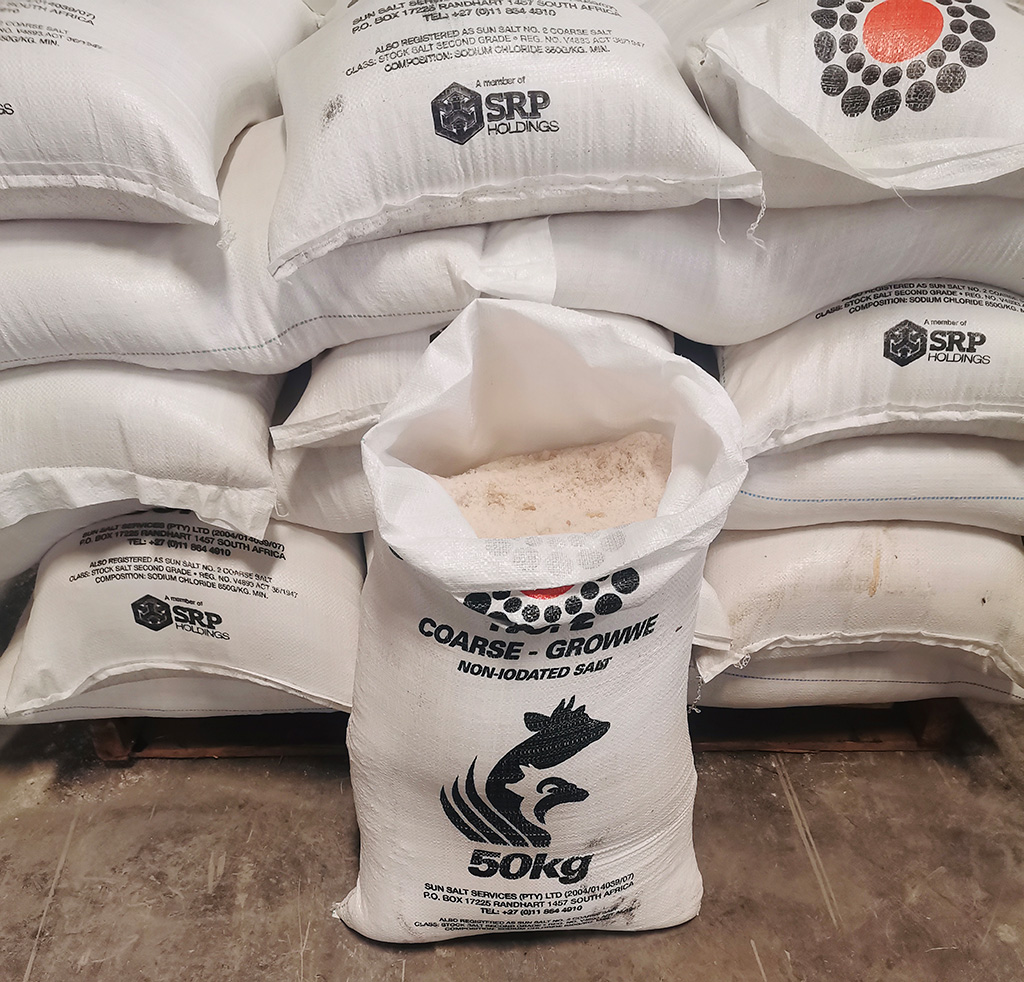
The basis of our farm-style bath salts.
Desert Snow
The salt found in the red Kalahari Desert marks the spot where a large ocean mass once lay. Nowadays, the salt brine is pumped from below the surface and left to sun-dry. From here, it’s hand-harvested, packaged and sold across the globe in all major retailers.
To experience just how incredible this saltery is, Loch Maree offers an exhilarating 4×4 dune ride right to the spot. Afterwards, sundowners overlooking the Kalahari are enjoyed with locally produced droëwors and biltong, all made and cured with the desert salt of the region. 082 351 1834
Dirty Scoop
Few things in life are as good as the simple combination of sugar and salt and Cape Town’s hippest creamery, Unframed Ice Cream, has perfected this balance of sugar, spice and everything nice. In fact, it has been voted the best in the world, dusting out the Italians and their own gelato game. Owner Yann Rey understands the value of using savoury elements to elevate the sweet taste. His vegan sea salt chocolate or dirty sea salt caramel creations have patrons flocking in. Great news is that they’ve recently launched pints of their batch-made to take home. 063 601 0287
Where: A number of Unframed joints have opened in the Mother City including Kloof Street and the V&A Waterfront. Visit the flagship store at 187 Sir Lowry Rd, Woodstock, Cape Town, Western Cape.

Dirty sea salt caramel
Cure Goodness
Cured and processed meats can be a treacherous minefield to navigate if you’re into eating real, local food but love hams and corned meats. This is the one food where the use and addition of salt is key but you need the good kind to really elevate the product without stripping it of its good and natural properties.
In KZN, Ambleside Farm has elevated SA’s charcuterie offering with their generational Midlands piggery.

Turmeric & ginger salt – yum
Mad Science
D.i.y. Kalahari salt
Get one up on your culinary pals by making your own, homemade fresh sea salt following the Kalahari Desert salt method.
All you need is the cleanest, freshest saltwater you can find. If you live near the ocean, ask a deep-fishing friend or fisherman to fill a 2L bottle when they’re next out at sea. Avoid sandy areas or the obvious no-go zones like sewage drains.
Once you have the water, let it sit undisturbed for several days so that any sand or sediment can sink to the bottom.
Next, slowly pour the water into a large pot, taking care not to disturb the sediment. You can also pour it through a cheesecloth to catch any other bits. Leave behind the last few centimetres of water and gunk.
Heat the water, allowing it to evaporate slowly. Make sure it stays below boiling point! This can take hours or even days as the water cooks down into a salty slurry. Remove from the heat when there are only a few centimetres of water remaining in the pot.
Next, spread the salty slurry out on baking paper in baking sheets and dehydrate in your oven, on the coolest setting with a wooden spoon wedged in the door to keep it ajar.
You’ll see once the crystals start forming and breaking down into grains of salt. Be sure to dehydrate fully before storing. Taste. Add salt if needed. That is a joke. Use as desired.
The farm butchery supplies their family-run farm shop – The Pig & Plough – and empowers the local community throughout.
Nestled at the foothills of the Drakensberg, you can experience these full-circle, farm-to-table practices and have the most delicious brined pork ribs while you’re at it. The restaurant’s menu boasts home-smoked bacon while the deli stocks the family’s Lovinghams cured meats to take home. 036 488 1542
Where: Route 74, Springfield Rd, Winterton, KwaZulu-Natal
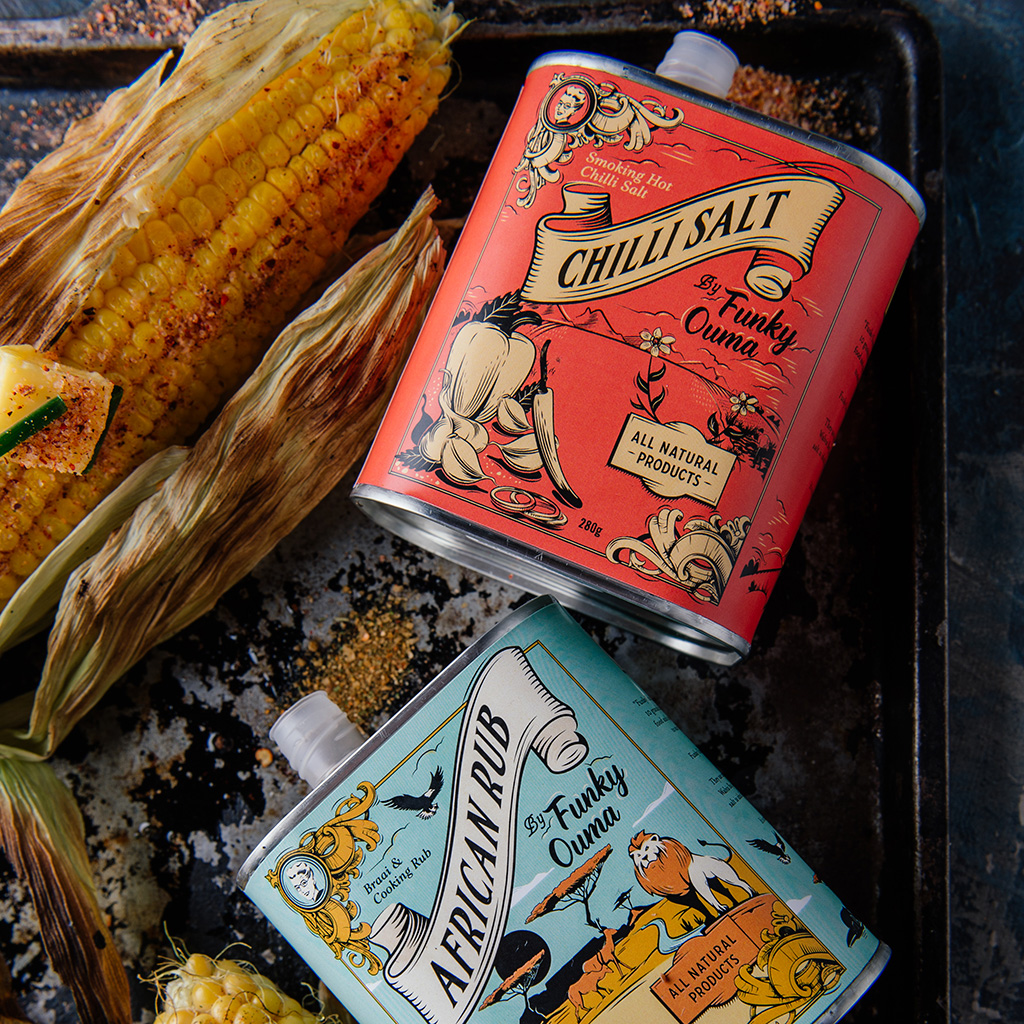
African Rub & Chilli Salt from Funky Ouma – upping SA’s salt game.
Seasoned Ouma
The Funky Ouma family-run business has added a uniquely South African flavour to the salt market. The factory and herb garden is as authentic as it gets; on a farm outside Wellington where Anneke van Rooyen – aka The Ouma – and daughter Johannita Eksteen live. The idea is simple; to give South Africans a natural, preservative-free alternative. The business has grown to host a full spectrum of spices and salts but the Braai Salt range remains a solid favourite. Try the African Rub to add some zing to your next braai. 076 999 8194
Where: Funky Ouma products are available at quirky farm stalls and coffee shops around SA, as well as all Montagu Dried Fruit shops. You can also shop online at www.funky-ouma.co.za

Braai salt recipe from Funky Ouma.










